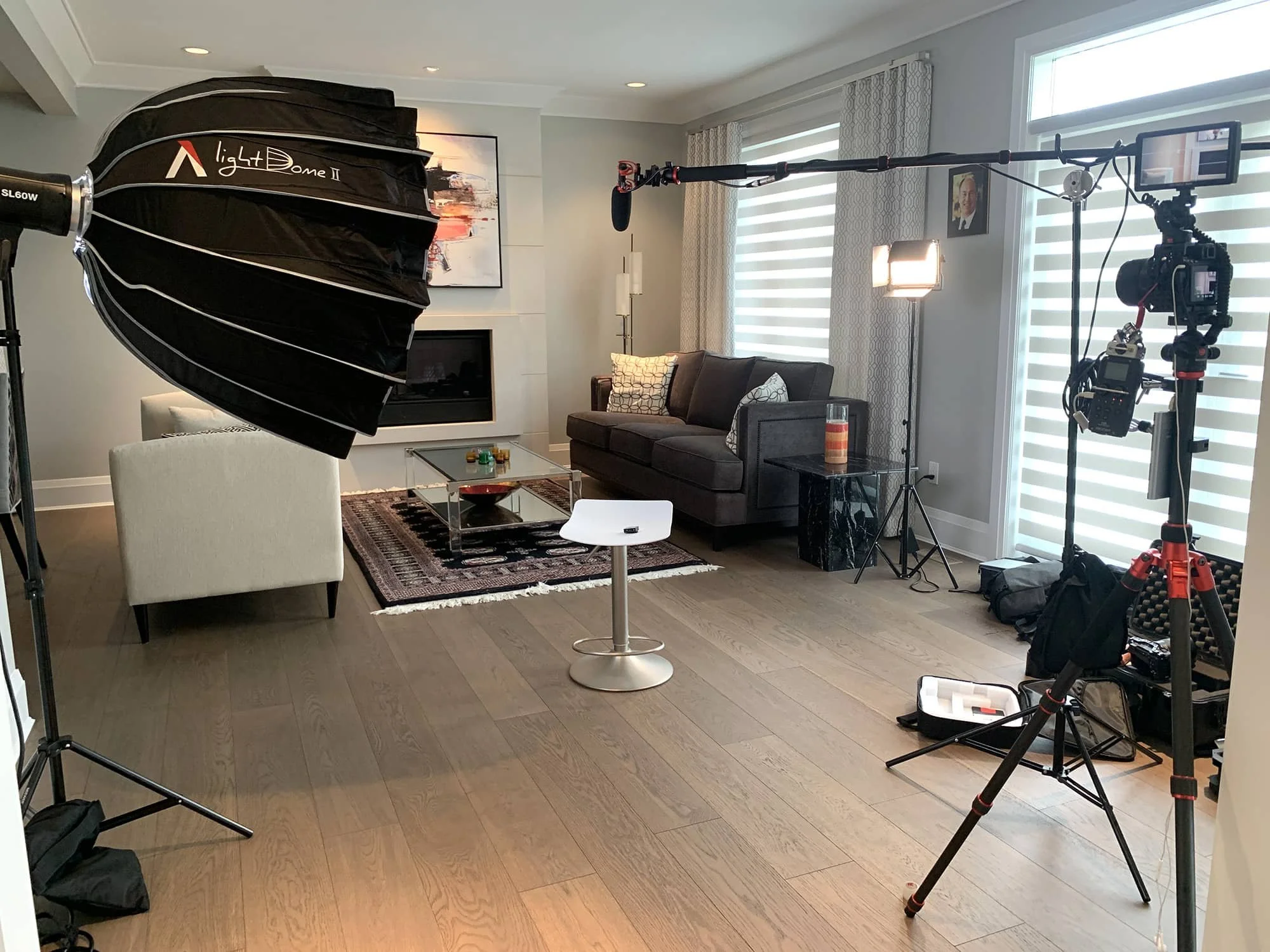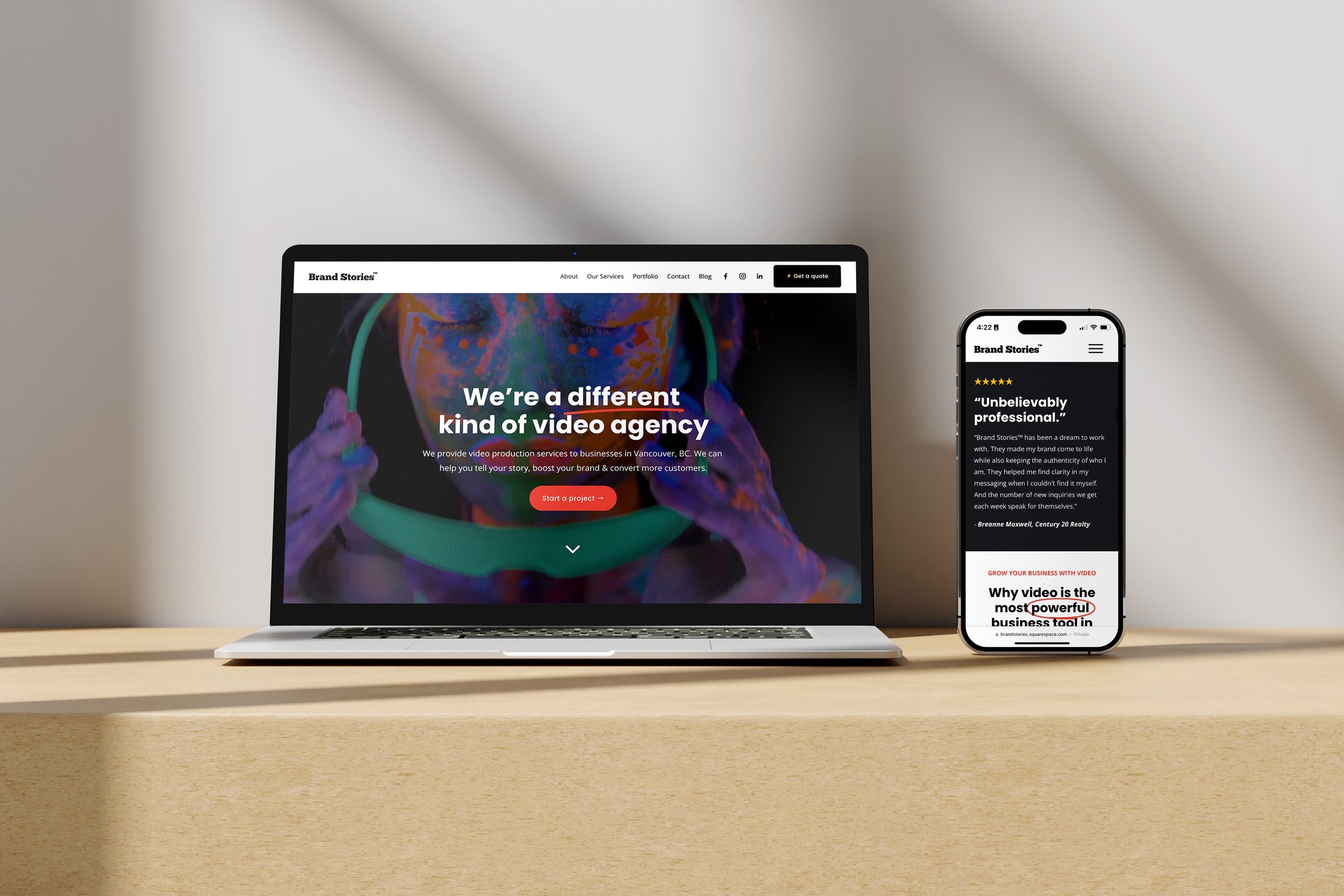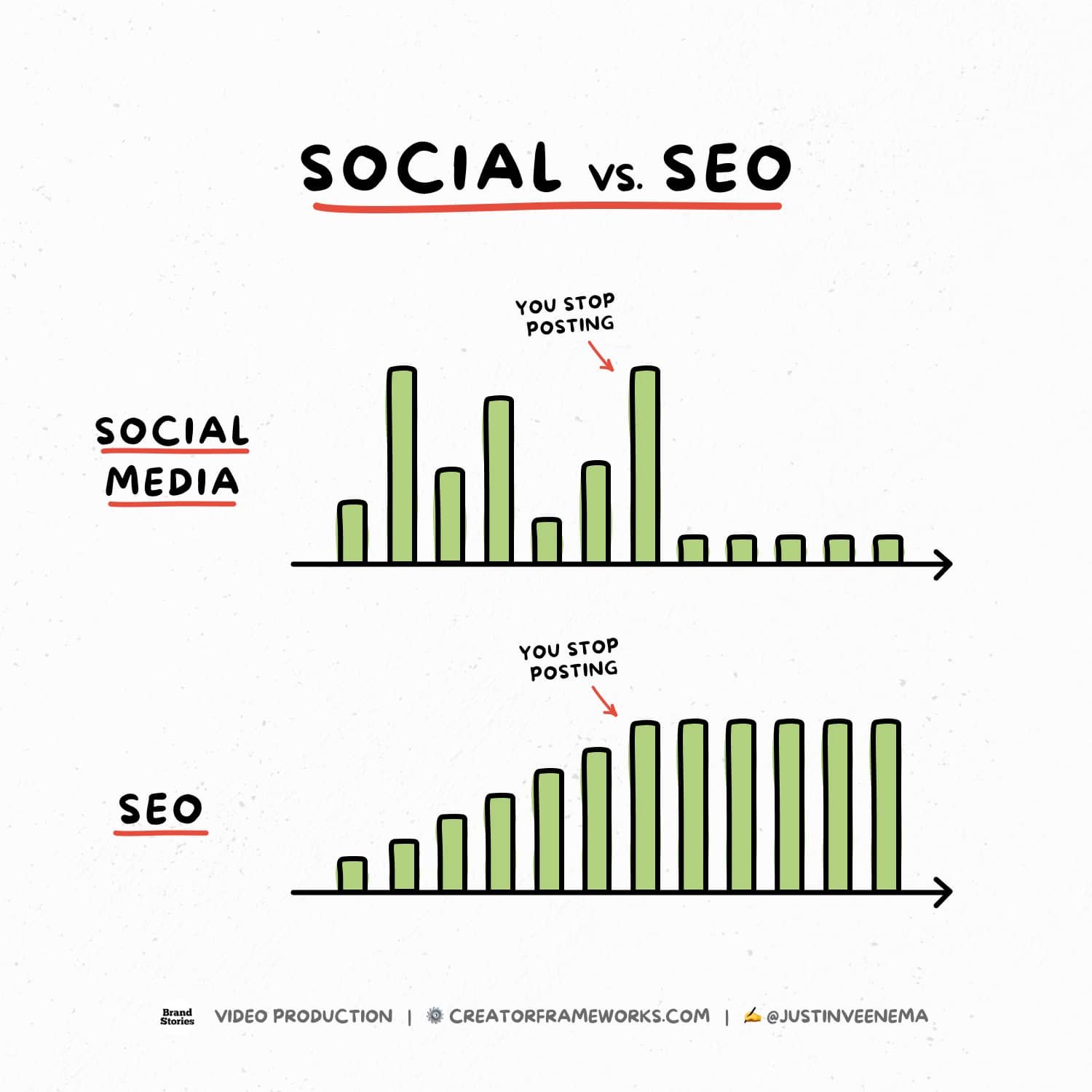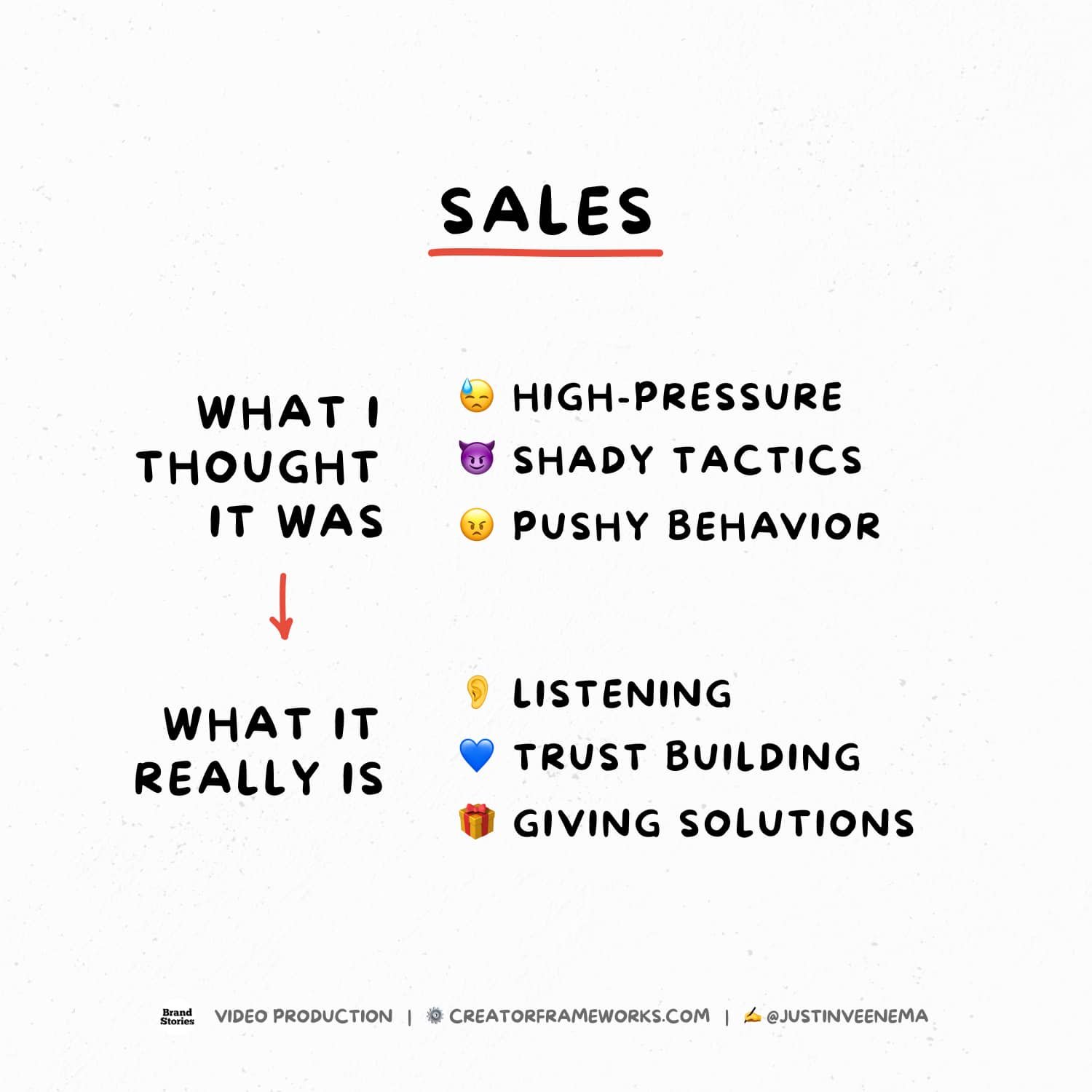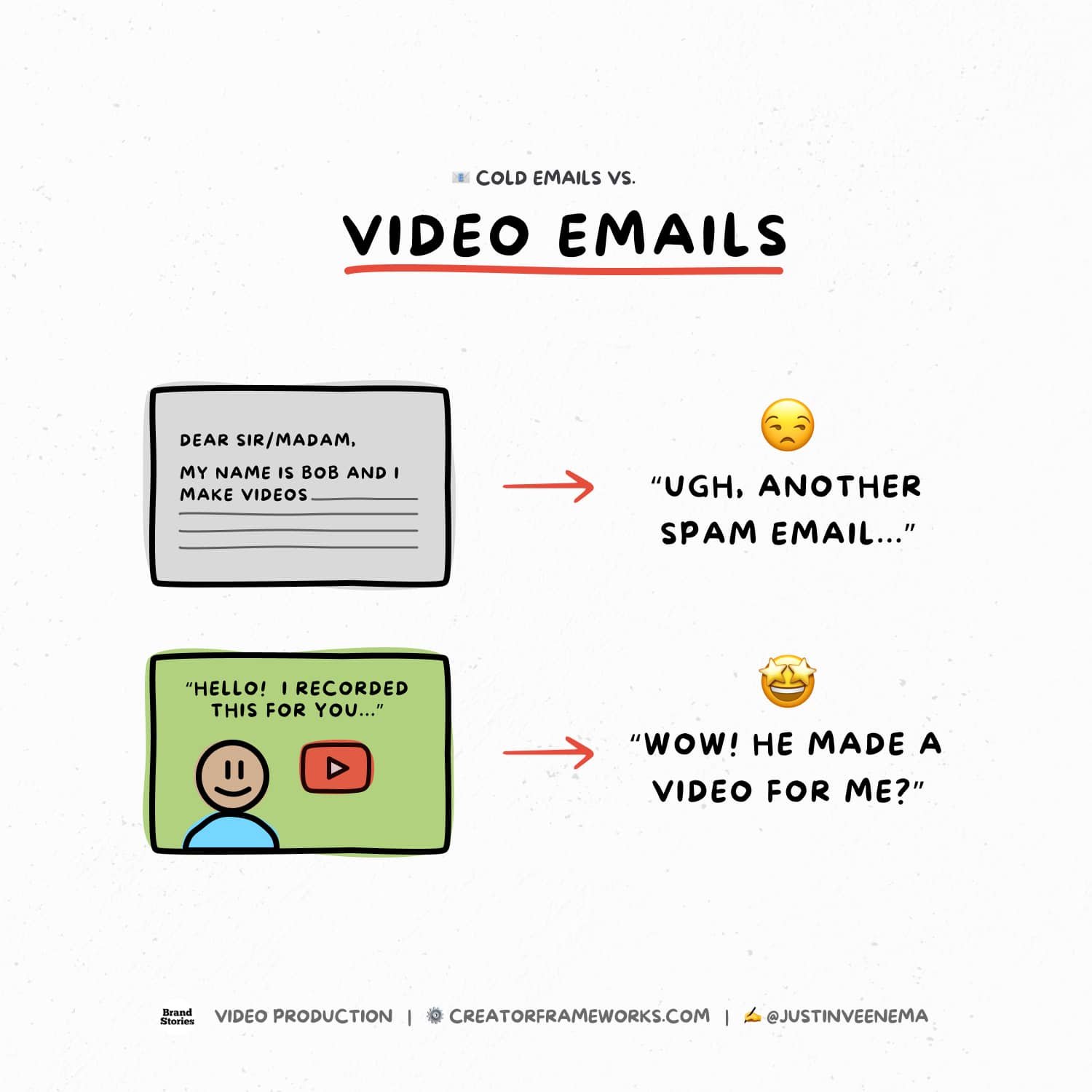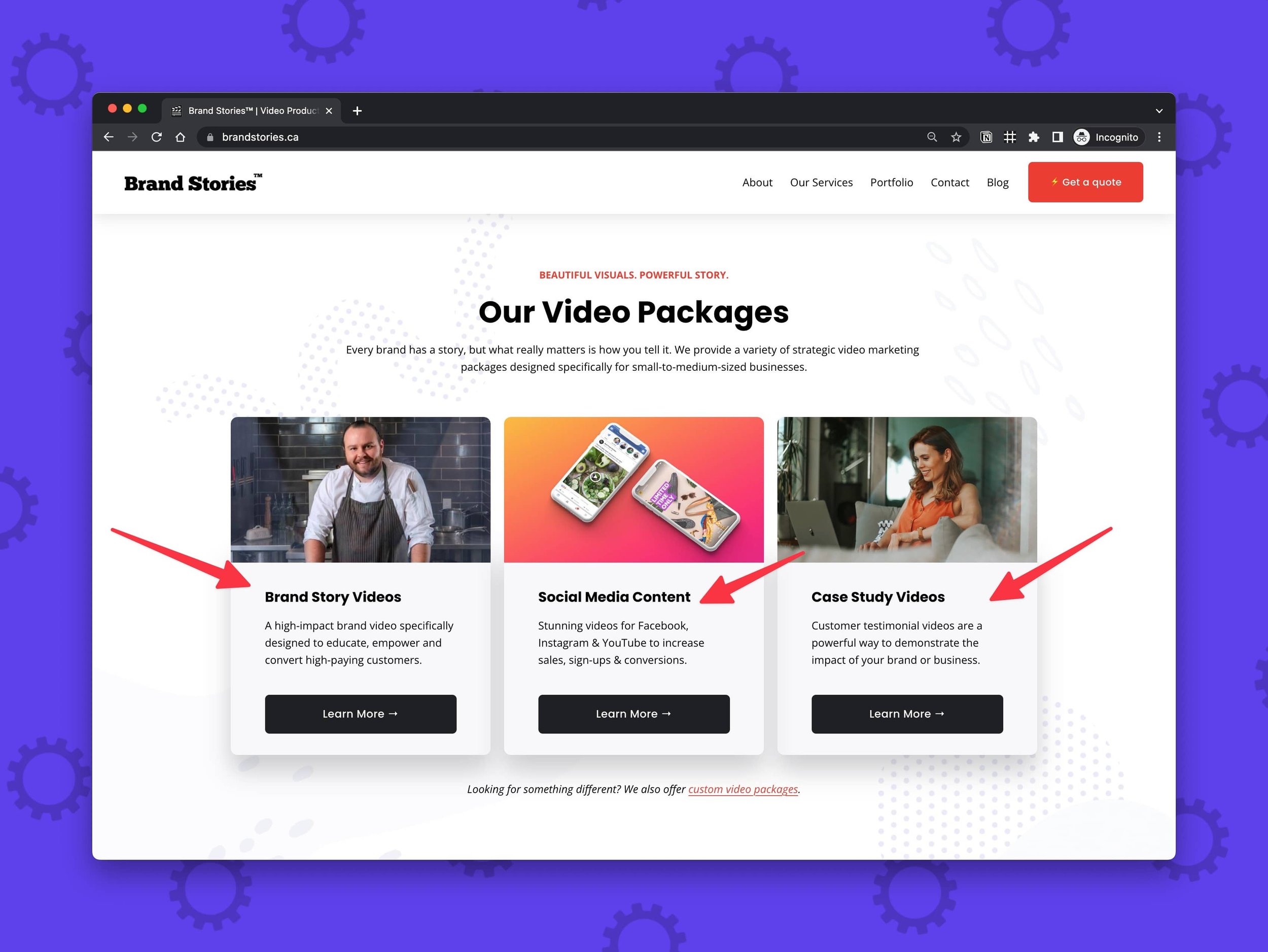How to Start a Video Production Company (From Scratch)
📝 Table of Contents
📖 Background
In 2018, with no prior experience in video production or business, I started a video production company called Brand Stories™. Originally, I planned on running it as a side hustle alongside my job at a marketing agency.
Then I was laid off a few weeks after starting it, which forced me to make a tough decision: Should I look for another job or go “all in” and try to make this business work?
After working in tech for over 8 years, I decided to bet on myself - and I’m glad I did. I went from earning $60k/year in my day job to earning $150k/year through my video agency. This allowed me to gain autonomy over my time and energy, and work with amazing clients that I admired.
🎯 Results
Generated $156K in revenue my first year in business
Ranked #1 on Google for “Video Production” in my area
Worked with major clients, including retail giants, tech accelerators, and local government
Hindsight is 20/20. Starting a video business was tough, but not as difficult as I expected. Although I tried many things that didn’t work at all, some strategies exceeded my expectations.
That's why I'm sharing this framework. I will break down the key actions that made a significant difference in my business. I will share what worked (and what didn’t work), and how I would approach things if I had to start over. I hope you find this information useful.
Note: Building a business involves many small steps. I cannot cover every single one, but I will focus on the actions that led to the biggest results. If you are familiar with Pareto's principle, think of this as my 80/20 strategy.
🔑 Key Takeaways
Company of One - There’s only full-time employee (myself), but I did work with contractors such as DP's and editors.
High-Converting Website - Building a website was one of the most effective things I did in my first year of business.
Invest in SEO - Optimizing the website for SEO resulted in a steady stream of clients.
Build Processes - Automating key processes, such as contracts and onboarding, saved a significant amount of time.
Wasted Efforts - Networking events and Instagram posts were some of the least effective strategies.
🧠 Skills Required
There are many skills required to run a successful video production company, but the most important ones are:
Video Production Skills - You need to know how to shoot/edit videos and craft a compelling story.
Communication & Sales - You need to know how to communicate with brands and sell your services.
Web Design - You either need to know how to design, or use a template so your brand looks professional.
SEO - I learned this on accident, but it’s one of the most important skills I’ve picked up as an entrepreneur.
🧰 Tools & Equipment
Apps & Software
Website Builder - Our website was my most valuable asset since that’s where most of my sales came from. I started with Webflow, but I eventually moved to Squarespace (it’s less expensive and way easier to use).
Client Management - I used Honeybook as our CRM to manage all client projects, including contracts, automation and collecting payments. And honestly? It was flawless. To this day, there’s still no better tool on the market.
Video Editing - I used Final Cut Pro X for all of my projects. If I were starting from scratch, I would choose Davinci Resolve as it provides more features and a better editing experience.
Graphic Design - I used Adobe Photoshop for most graphic design tasks, including our logo and branding.
Music, SFX & Assets - I used Envato Elements, Epidemic Sound, and Storyblocks.
Camera Gear
I’ve wasted a LOT of money on gear. It’s probably the biggest bottleneck for most new video production businesses. However, if you’re smart with prioritizing your gear purchases, you can start small and make strategic investments over time.
These are the tools that had the biggest impact in year one:
Camera & Lenses - I started everything with a single camera (A73) and a variable zoom lens (Tamron 28-75 2.8). I eventually upgraded to multiple camera bodies (A7S3, FX3) and various prime lenses (ie. 24mm, 35mm, 85mm).
Audio - The most important audio purchases were a good shotgun mic (Rode Videomic NTG) and a wireless audio kit (Rode Wireless Go with a lav mic). If I had to start all over again, I would choose the DJI Wireless Mics instead.
Lighting - I purchased an Aputure 120D, a Light Dome, and a Falconeyes LED softbox. I also bought cheap LED lights, which were used as hair lights and kicker lights.
Stands & Tripods - A good tripod is important - but I just went with a heavy-duty Neewer tripod with a fluid-head attachment. I also started with generic C-stands and upgraded to higher-quality versions over time.
Gimbal - I want to say gimbals aren’t important, but honestly, it was one piece of equipment that really stood out to my clients. You must remember that most of your clients have never seen video equipment before, so seeing something like a gimbal for the first time can really impress them. I used a DJI gimbal, and I’d recommend the RS3 Pro.
Drone - This is another piece of equipment that clients loved. I went with the DJI Mini because it didn’t require a license here in Canada. This proved to be more than enough for all of my client projects, but I’d recommend the DJI Mini 3 Pro to be safe.
Pelican Case - This is one of those purchases that I wish I made sooner. The first time I brought a pelican case, the client commented about how professional we appeared compared to all the other videographers they’ve worked with in the past. The cases I bought were the 1510 and the 1650.
Filters - Invest in a good variable ND filter to shoot in bright conditions (this happens often). I would also recommend a Mist filter to make the clients’ skin look softer on camera. If you want a combination filter, I recommend the Peter McKinnon Variable ND Mist series.
Accessories - My most used accessories were cheap moving blankets (to block/shape light), reflectors, and extra batteries/cables.
Note: You can find a full list of my personal camera gear here.
📝 Process
1. I Found My Tribe
Building a business can be a lonely experience, so it's important to surround yourself with like-minded people early on in your journey. These individuals can guide you and help keep you motivated. For me, joining the 'How to Sell Video Production at Higher Rates' Facebook group was one of the biggest motivators early on.
In this group, there was no competition among members. Instead, everyone was working together in the trenches and trying to help each other succeed. By seeing how other agency owners structured their deals, projects, and businesses, I gained the knowledge and confidence to charge more for my projects. Additionally, I learned how to navigate tricky situations, which saved me from having to figure them out on my own.
Through this group, I even made a few lifelong friendships, including being a groomsman at my friend Marcus' wedding.
2. I invested in gear + learning
To start shooting, I had to get the necessary gear. Above, I listed the most important pieces of gear I acquired during my first year in business. Next, I studied video production by carefully going through tutorials on topics such as:
Shooting / Editing
Audio Engineering
Composition
Lighting Techniques
Video Editing
Colour Grading
I initially thought that my background in photography would make the transition to video production easy, but I was wrong. It has a steep learning curve, so it takes time and patience to get better.
You can find helpful Skillshare classes or watch tutorials from creators like Peter McKinnon, Dunna Did It, and DSLR Video Shooter. The key here is not just to watch the tutorials but to actually practice the techniques you’re being taught.
Learn, make, repeat.
3. I Built My Website
I didn’t realize it then, but my website would be my most valuable asset. While other local videographers struggled to find clients, I got more bookings in my first year than I could feasibly handle.
If you do anything - prioritize your website. It’s the first thing your potential clients will look at. It’s your digital portfolio to display your best work. It’s your salesperson that works 24/7 to convert prospects into paid customers. And it’s the thing that will set you apart from your competition.
It should look professional. When someone lands on your website, they should feel like you’re a professional business. This is key to charging higher prices for your work. If you look like an amateur, they will want to pay amateur prices. Instead, they should look at your site and feel confident that they’re working with a reputable brand.
My website worked because it had these pages:
Home Page - A single page that breaks down who I was, who I served how I could provide value.
About Page - Explains who I am, what I believe and my goals for the business.
Contact Page - A super easy way for clients to contact me.
Discovery Form - A qualifying form that all potential clients had to fill out in order to work with me.
Service Pages - Each individual service has its own landing page which helps with SEO and discoverability.
Portfolio - A central place to display my work (instead of sending a bunch of YouTube links).
🧠 Heads up: I recently converted my website into a Squarespace template that you can customize to match your brand. If you want a good starting point for your own website, you can check it out here.
4. I built up My Portfolio
Next, I added videos to my portfolio that would appeal to my target demographic.
I contacted a few business owners in my area to see if they would be interested in a free video in exchange for a review. This allowed me to fill my portfolio with videos that I could reference during sales meetings with future prospects.
☝️ This is the first video I ever created. I offered it for free to help build my portfolio. Looking back, the video is a little rough around the edges… but I learned a lot from the process, and it gave me the confidence to pursue video full-time. You can find my updated portfolio here.
Permissionless Apprentice - Another thing you could do is create mock videos for brands you like. Spec ads are a great way to show your stuff without actually landing the client. In fact, One Peak Creative saw success early in the pandemic from their Adsolation series, which even landed them a deal working with Ryan Reynolds.
5. I focused on SEO
If you're like me, you might think SEO is a super technical topic and have no interest in learning it. But looking back, SEO was one of the most important parts of my journey.
A few months after creating my website, I got my first organic lead. This was someone who found me on Google and filled out my discovery form to hire me. I knew he found me via Google because I asked him. The week after, I got another lead. Then another. All of them came from Google.
I searched for "Video Production near me" and found my website on the front page of Google.
I thought this was normal, but when I told my videographer friends what was happening, they were in disbelief. They had websites for years and never got a single client from them. Something I was doing was working.
As it turns out, the way I structured my website and wrote my copy was actually good for SEO.
Although I wish I could take credit for it, this all happened by accident. At the time, I could only think, "If that's what I can do without even trying, I wonder what would happen if I actually tried?"
After learning, testing, and iterating, I eventually ranked #1 for the term "Video Production" in my area. When that happened, it was game over. Suddenly, I had more clients than I knew what to do with.
I never had to worry about finding clients again. In my first year, over 90% of my clients came from Google. Each week I would get new clients reaching out, which gave me a sense of security in my business and allowed me to level up much faster than my competition.
There were some months when I would get so many inquiries I had to start passing them off to my competitors. Eventually, I had to start a waitlist which allowed me to:
Be selective of which clients I worked with, and
Increase our rates exponentially
I highly recommend investing in SEO. It’s one of those big-lever activities that can drastically change the trajectory of your business. There’s tons of information available for free on Google, or you can hire an SEO agency to speed up the process.
👉 Or, if you want to see what I did, I built a video course that covers everything I’ve learned about SEO for building my video business. This course is packed with over 6-hours of content and tutorials. You can check it out here.
But no matter what, don’t skip this step. Client acquisition is one of the hardest things for new business owners. If you solve this, it solves so many other problems in the process.
6. I Learned How to Sell
When I first started my business, I sucked at selling. It was probably my biggest weakness - but it was something I needed to overcome if I was going to make it work, so I invested time and energy into learning how to sell.
I used to feel like selling was skeezy. I imagined a used-car salesman forcing people to buy something they didn’t really want. But over time, I realized sales is more about helping people overcome their own objections.
To this date, the most effective book I’ve read on the subject is ‘Video Selling Formula’ by my friend Marcus Rideout. It’s a super practical look at sales, giving you an easy-to-follow framework for pricing and pitching your projects. I recommend the audio-book version, but the e-book version is just as good.
The first video package I sold was $1,300 for a single video. But as the year went on (and my skills increased), I slowly increased my pricing. By the end of year one, I was charging an average of $8,500 per project.
7. I did Video Outreach
Do you have a fancy camera and lights? When you're not working with a client, try filming yourself!
Video outreach was one of my core strategies in year one. It's a great way to get noticed by a brand and introduce yourself in a non-salesy way. With tools like Loom, I could record and send several videos quickly and easily.
Here's what I did each week:
Made a list of businesses I wanted to work with.
Recorded a brief 1-2 minute video introducing myself.
Sent the video to them through email or their contact form.
The goal was to build a relationship with the business owner and let them know that I was a fan of what they were doing. That way, the next time they needed video production services, they would remember me.
This strategy helped me make sales and get referrals. It also kept me busy when things were slow and gave me a feeling of control over the situation. To this day, I still believe that video outreach is one of the most underused strategies for finding clients.
8. I Started Wide, Then Niched Down
Brand Stories™ started off as a “do it all” type video agency, meaning I took on virtually every project that came my way.
But over time, I got a feel for the types of projects I actually enjoyed working on (and the clients I enjoyed working with). As demand for my services grew, I was able to “niche down” and offer more specific video packages for my clients.
Instead of being mediocre at 100 different video formats, I got really good at a select few. This allowed me to build more advanced systems and processes around these types of videos, which meant we could create a better product and ultimately gain happier customers.
The video types I ‘niched down’ to were:
Brand Story Videos - A visually compelling and emotionally engaging video asset that communicates the unique history, values, and personality of a brand in a concise format.
Customer Testimonials - An incredibly powerful video asset focusing on high-impact social proof (aka letting their customers sing their praises).
Social Media Ads - High-impact, short-form content designed to increase ROI on paid social advertising, including Facebook, Instagram, and TikTok.
9. I Built My Systems
In the beginning, everything was manual. This includes sending emails, invoices, contracts, follow-ups, etc. It was a LOT of effort to stay on top of everything, so I decided early on to systemize and automate as many tasks as possible, so I could focus on making great videos.
Automations
The majority of my automation tasks were created using Honeybook, which in my opinion, is the best CRM for creative businesses. I tried so many CRM’s including Dubsado and Tave, but Honeybook was the clear winner in terms of simplicity and features.
Discovery Form - I built a form in Honeybook and embedded it on my website. Implementing this saved me a ton of headaches, allowing me to screen each client/project to see if it would be a good fit. Once a client filled out the discovery form, they would get an automated email letting them know we would be in touch within 48 hours.
Proposal - Honeybook allows you to create beautiful proposals that you can send directly to the client. This allowed me to pitch the project, deliverables, and terms quickly and easily.
Contracts - After the proposal, the next thing the client saw was the contract. I had a base contract that covered 90% of my projects, which I added into Honeybook. Then I used their contract field feature to automatically pull in the client's Name, Address, Phone Number, etc, and dynamically add it to the contract.
Payment - The last step in the proposal is the payment. You can set your own terms, but I collected 50% deposit up-front before I would start any pre-production. The client makes the payment online, and I would receive a notification from the Honeybook app.
Onboarding - After payment, I had a workflow set up to automatically send them key information, such as what to wear on-camera, what to expect, how to prepare, and even a simple implementation guide.
Event Reminders - Once the shoot date was booked in Honeybook, a series of reminder emails would get scheduled leading up to the date (both for my client and myself). This ensured everyone was always on the same page.
Reviews & Follow-Up - After the project was wrapped up, Honeybook would automatically schedule a task for me to follow up with the client in 6 months, 1-year and 2-year increments. This allowed me to check-in to see how the videos were performing, as well as collect reviews and case studies. This lead to a lot of repeat business over the years, so I would often follow up using tools like Loom to make it even more personal.
Workflows
Pre-Production - The most important part of this step is clarifying how we will tell the story. That way, come shoot day, I know exactly what to shoot (and how to shoot it). To do this, I would interview the client over Zoom and import the recording into a tool like Descript. This allowed me to re-structure the story in a visual, text-editing format which made it easier to construct a narrative. From there, I would make a basic ‘shot list’ in Apple notes, which I would reference during the shoot.
Production - I had a manual checklist that I would go through every time I started a project, which included things like charging batteries, packing filters, and wiping SD cards. This might seem silly, but it prevented me from forgetting crucial steps and ensured I was well-prepared for every single shoot.
Post-Production - I started delivering videos and revisions via Google Drive, but when I discovered Frame.io I switched immediately. Frame.io makes it 10x easier to collect feedback and deliver videos quickly. Once all revisions were done and I collected all remaining payments, then I would deliver the final video files.
How to determine which tasks to automate
Here are the questions I would ask myself each week to determine which tasks were worth automating.
Have I done this task more than 4x this month?
Does this task take time, energy, or mental bandwidth?
Is there a chance I could forget to do this task?
Has more than one customer asked this question?
Do I find that I’m repeating myself?
If I answered “yes” to any of those questions, I would find a way to automate it. This way, I could put my energy into doing it right once, then never think about it again. The areas that were the most beneficial to automate included contracts, event reminders, payment reminders, onboarding documents, and follow-ups.
10. I Kept LevelLing Up
Complacency kills businesses, so every client project was another opportunity to level up in some way, shape, or form. Here are some of the ways I would try to improve with each project:
Editing - I would try new editing styles, storytelling techniques, animations, and motion graphics.
Equipment - I would constantly re-invest in my business, including gear like lenses, gimbals, and drones.
Cinematography - I would try new angles, viewpoints and focal lengths to give more depth to the story.
Contractors - I would hire contractors who specialized in things like editing, audio engineering or cinematography. This way I could not only improve the end product, but I could also learn from them directly.
🚫 What Didn’t Work
There were many strategies that I tried over the years that had little to no impact on our bottom line. This might be different for you, but these activities had the lowest ROI for my video business.
Networking Events - I found these to be one of the biggest time-wasters. Going to an event where everyone has an agenda and is trying to pitch something was never effective for me.
Referrals - While we did get many referrals, this is not a reliable way to grow your business. You ultimately have no control over how many referrals you get, which can lead to unpredictability in your sales.
Posting Videos on Social Media - This works for some people, but I found posting on social media had a low ROI compared to everything else we tried. First, we have no control over the FB/IG algorithm. Second, the people who were making buying decisions in an organization (marketing vp’s, brand managers) usually weren’t following us on Instagram. Like I said, this can work for some people, but compared to everything else we tried this was not effective.
⚠️ Risks & Pitfalls
Starting any business is risky. There are a ton of variables outside of your control. For example, the pandemic started just a few months after I started my business which changed how we did everything.
But it isn’t as risky as other businesses. If you were starting a business selling $5 trinkets, you would need to sell thousands of units each month just to be profitable (which is way more difficult to do). With a high-ticket service like video production, you only need 1-2 monthly clients to earn a decent living.
Be careful of GAS (Gear Acquisition Syndrome). It can be tempting to upgrade your gear early on, but take it from me… this isn’t what will grow your business. The right equipment might make projects easier to execute, but at the end of the day, your client will never be able to tell if your video was shot on a $1000 camera or a $50,000 rig.
Collecting Payments. What surprised me the most was how difficult it was to get paid by established brands. Not because they can’t afford it, but because processing vendor payments can be extremely slow in larger organizations. I once had to wait six months to receive payment from one of my largest clients.
📕 Resources
Squarespace Template - If you want a good starting point for your video agency website, check out my Video Agency™ Squarespace Template. This is based on my own website, which has been optimized over four years for maximum conversion.
SEO Course - I believe anyone can learn SEO on their own for free. But if you want to save time and see exactly what worked (and didn’t work) for my video business, check out my Video Agency™ SEO Course.
Video Production Tutorials - If you want to learn the technical side of video production, check out my friend Dunna Did It. His channel covers all things video production, including cameras, audio, editing, and color grading tutorials.
1-on-1 Support - If you want specific advice or feedback on your video business, you can send me an email or book a call with me here. Please note that I’m only taking four calls/month right now, but I’m happy to answer any questions you have over email.




